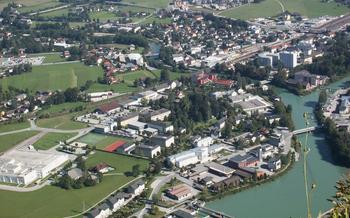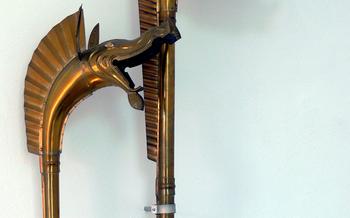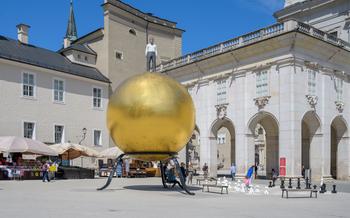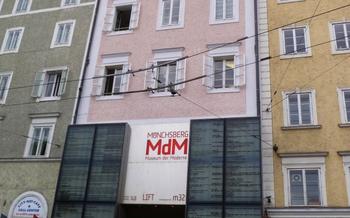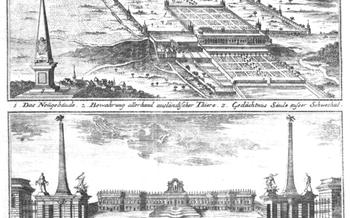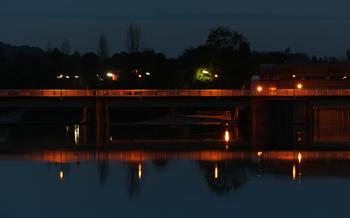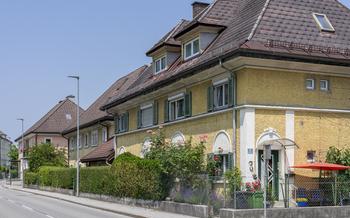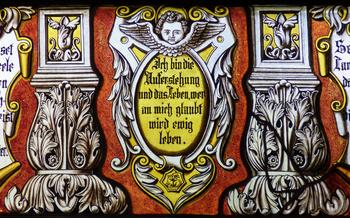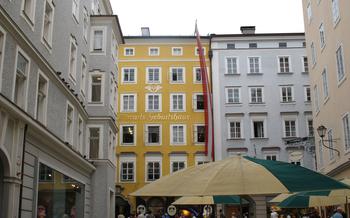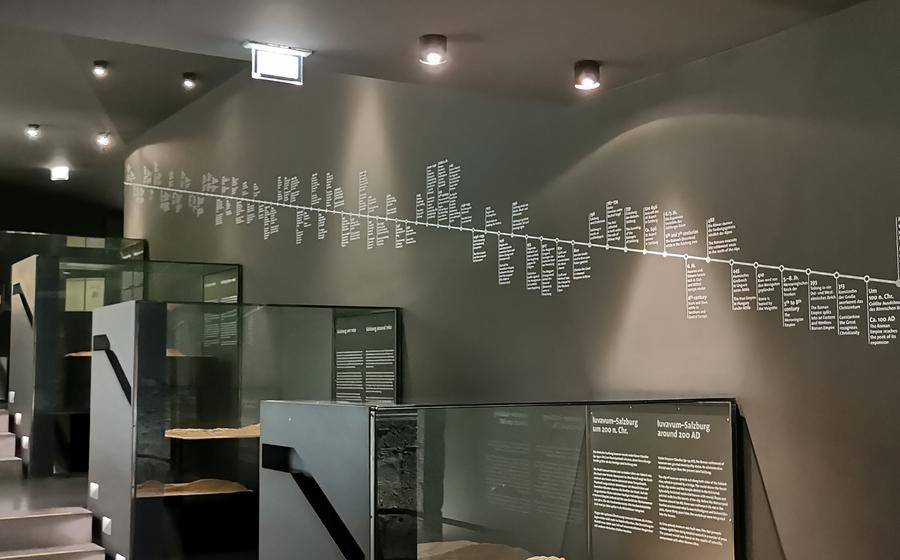
Salzburg Museum
- Salzburg Museum: A Journey Through History and Art
- Tracing Salzburg's Roots: The Celtic and Roman Era
- Renaissance and Baroque Masterpieces: A Cultural Awakening
- Mozart's Legacy: Celebrating the Musical Genius
- Salzburg's Musical Heritage Beyond Mozart
- Marionette Theater: A Unique Salzburg Tradition
- Panorama Museum: Capturing Salzburg's Beauty
- Natural History Museum: Exploring Salzburg's Diverse Flora and Fauna
- Modern and Contemporary Art: A Dynamic Scene
- Workshops and Educational Programs: Engaging Visitors of All Ages
- Research and Conservation: Preserving Salzburg's Cultural Treasures
- Accessibility and Inclusivity: Welcoming All Visitors
- Special Events and Exhibitions: A Vibrant Cultural Calendar
- Insider Tip: Hidden Gems and Unique Experiences
Salzburg Museum: A Journey Through History and Art
Nestled in the heart of Salzburg's Old Town, the Salzburg Museum stands as a testament to the city's rich history and vibrant cultural heritage. Established in 1834, it is one of the oldest museums in Austria and houses a diverse collection of artifacts, artworks, and interactive exhibits that take visitors on a captivating journey through time.
The museum's collection spans from prehistoric times to the present day, offering a comprehensive overview of Salzburg's fascinating past. Visitors can explore archaeological finds from the Celtic and Roman periods, delve into the ecclesiastical treasures of the Middle Ages, and marvel at the Renaissance and Baroque masterpieces that adorn the city's churches and palaces.
A highlight of the museum is the section dedicated to Wolfgang Amadeus Mozart, Salzburg's most famous son. Interactive exhibits shed light on Mozart's life and work, showcasing personal belongings, handwritten manuscripts, and insights into his creative process. The museum also pays homage to other renowned musicians who have shaped Salzburg's musical legacy, such as Joseph Haydn, Michael Haydn, and Herbert von Karajan.
Tracing Salzburg's Roots: The Celtic and Roman Era
Salzburg's history stretches back to the Celtic period, leaving behind a rich legacy of archaeological treasures. Excavations have unearthed artifacts such as bronze tools, pottery, and jewelry, offering glimpses into the daily lives and customs of the ancient Celtic inhabitants. The museum's collection includes intricate brooches, torcs, and weapons, providing tangible evidence of their skilled craftsmanship and cultural heritage.
In the 1st century AD, Salzburg fell under Roman rule, marking a significant turning point in its development. The Romans established the city of Juvavum, constructing roads, temples, and other urban structures. The museum showcases Roman artifacts such as coins, ceramics, and architectural fragments, illustrating the profound influence of Roman culture on Salzburg's urban landscape. The well-preserved Roman road network, connecting Juvavum to other parts of the empire, facilitated trade, travel, and cultural exchange, contributing to the city's growing prosperity.
Renaissance and Baroque Masterpieces: A Cultural Awakening
The Salzburg Museum also houses an impressive collection of Renaissance and Baroque masterpieces, showcasing the city's rich artistic heritage during these periods. The Renaissance, which spanned the 14th to 17th centuries, witnessed a revival of interest in classical art and humanism. This influence can be seen in the museum's collection of paintings and sculptures from this era, characterized by their realism, vibrant colors, and intricate details.
Italian and German artists played a significant role in shaping Salzburg's artistic landscape during the Renaissance. Their works, influenced by the humanist ideals of the period, depicted religious and mythological scenes, as well as portraits of prominent figures. The museum's collection includes works by renowned artists such as Lucas Cranach the Elder, Albrecht Dürer, and Hans Burgkmair, showcasing their mastery of line, form, and color.
The Baroque period, which followed the Renaissance, brought about a shift in artistic style towards grandeur, theatricality, and emotional intensity. This is evident in the museum's collection of Baroque paintings and sculptures, characterized by their dynamic compositions, exaggerated forms, and use of light and shadow to create dramatic effects.
The influence of the Catholic Church on Salzburg's artistic landscape during this period is also apparent. Many of the works in the collection were commissioned by the church to adorn its buildings and convey religious messages to the faithful. Visitors can admire elaborate altarpieces, sculptures of saints, and ceiling frescoes that exemplify the fusion of art and spirituality during the Baroque era.
Overall, the Salzburg Museum's collection of Renaissance and Baroque masterpieces offers a fascinating glimpse into the city's cultural awakening during these periods. Through these works of art, visitors can trace the evolution of artistic styles and themes, as well as the influence of various artists and the Catholic Church on Salzburg's rich cultural heritage.
Mozart's Legacy: Celebrating the Musical Genius
The Salzburg Museum also pays homage to the city's most famous son, Wolfgang Amadeus Mozart. Through interactive exhibits, personal belongings, and handwritten manuscripts, the museum offers a glimpse into the life and work of this musical prodigy. Visitors can delve into Mozart's creative process, explore his influences, and appreciate his enduring impact on the world of music.
The museum's collection includes a variety of artifacts related to Mozart, such as his childhood violin, original scores, and personal letters. Interactive displays allow visitors to listen to his music, play virtual instruments, and even conduct a digital orchestra. Through these engaging experiences, the museum brings Mozart's genius to life and invites visitors to connect with his musical legacy on a deeper level.
The Salzburg Museum is not only a repository of historical artifacts but also a vibrant center for cultural exploration. Its dedication to preserving and celebrating Mozart's legacy ensures that the spirit of this musical maestro continues to resonate within the walls of the museum and beyond.
Salzburg's Musical Heritage Beyond Mozart
While Mozart remains the most celebrated musical figure associated with Salzburg, the city's rich musical heritage extends far beyond his legacy. Numerous other renowned musicians have contributed to Salzburg's vibrant music scene, leaving an indelible mark on its cultural identity.
One notable figure is Michael Haydn, the younger brother of the renowned composer Joseph Haydn. Michael Haydn served as the court composer in Salzburg for over four decades, composing a vast body of works that included symphonies, operas, and sacred music. His contributions to Salzburg's musical landscape were significant, and his music continues to be performed and appreciated to this day.
Another prominent composer associated with Salzburg is Anton Diabelli, who played a pivotal role in the development of the Viennese music publishing industry. Diabelli's compositions, including his famous "Diabelli Variations," which inspired Beethoven's own set of variations, showcase his mastery of counterpoint and melodic invention.
The legacy of these composers, along with many others, has shaped Salzburg's reputation as a city of music. Their works are performed regularly in concert halls and festivals throughout the city, ensuring that Salzburg's musical heritage remains alive and vibrant for generations to come.
In addition to its rich history of classical music, Salzburg has also embraced contemporary musical genres. The city hosts a diverse range of music festivals and events throughout the year, showcasing everything from jazz and rock to electronic music and world music.
The Salzburg Festival, one of the world's most prestigious performing arts festivals, features a wide variety of musical performances, including opera, concerts, and recitals. The festival attracts renowned musicians and artists from around the world, further solidifying Salzburg's position as a global center for music.
Marionette Theater: A Unique Salzburg Tradition
The Salzburg Marionette Theater is a cherished cultural institution that has captivated audiences for over a century. Immerse yourself in the enchanting world of marionettes, where intricate puppets come to life on stage, telling timeless tales and enchanting stories. Discover the history of this unique art form, dating back to the 18th century, and learn about the painstaking craftsmanship that goes into creating these magical characters.
Go behind the scenes and witness the meticulous process of puppet making, from carving and painting to designing intricate costumes. Marvel at the skill and artistry of the puppeteers as they bring these inanimate objects to life, infusing them with personality and emotions.
Indulge in a live performance, where the magic truly unfolds. Watch in awe as the marionettes dance, sing, and act, captivating audiences of all ages with their grace and expressiveness. From classic fairy tales to contemporary stories, the repertoire of the Salzburg Marionette Theater is vast and diverse, ensuring an unforgettable experience for every visitor.
The marionette theater is not just a place of entertainment; it is a symbol of Salzburg's rich cultural heritage. It preserves and promotes this unique art form, ensuring its legacy continues to inspire and enchant generations to come.
Panorama Museum: Capturing Salzburg's Beauty
The Panorama Museum in Salzburg offers a unique perspective on the city and its surroundings. Step into a cylindrical room and be transported back in time through stunning 360-degree panoramic paintings. These intricate artworks depict Salzburg's cityscape, the surrounding mountains, and the vibrant life along the Salzach River in the 19th century.
The museum's collection includes several panoramic paintings, each offering a different view of Salzburg and its landmarks. Gaze upon the majestic Hohensalzburg Fortress, marvel at the intricate details of the Old Town, and let your eyes wander over the verdant hills and sparkling waters that define Salzburg's breathtaking landscape.
More than just a visual spectacle, the Panorama Museum also provides historical context and intriguing stories behind the paintings. Interactive elements and multimedia presentations bring the past to life, allowing visitors to immerse themselves in the era depicted in the panoramas.
One of the highlights of the museum is the Möglichkeit, to step into the paintings themselves. Through virtual reality technology, visitors can explore the streets of Old Salzburg, wander through the bustling markets, and even take a boat trip down the Salzach River, offering a truly immersive and unforgettable experience.
The Panorama Museum is a must-visit for anyone interested in Salzburg's history, art, and culture. It offers a captivating journey through time, allowing visitors to appreciate the city's beauty and rich heritage from a unique and awe-inspiring perspective.
Natural History Museum: Exploring Salzburg's Diverse Flora and Fauna
The Natural History Museum in Salzburg offers a captivating journey through the region's rich biodiversity. Interactive exhibits, educational displays, and hands-on activities bring to life the wonders of the local ecosystems. Immerse yourself in the world of geology, paleontology, and zoology, discovering the fascinating creatures that call Salzburg home. Learn about the delicate balance of local habitats and the importance of conservation efforts to preserve this natural heritage for generations to come.
Modern and Contemporary Art: A Dynamic Scene
The Salzburg Museum also embraces the realm of modern and contemporary art, showcasing works from local and international artists who push the boundaries of creativity. This dynamic section of the museum features innovative and experimental art forms, challenging traditional notions and sparking thought-provoking conversations. Temporary exhibitions and rotating displays keep the collection fresh and engaging, ensuring that visitors can experience a diverse range of artistic expressions. The museum's commitment to contemporary art highlights the ever-evolving nature of Salzburg's cultural landscape and its role as a vibrant hub for artistic innovation. By exploring the intersection of art, technology, and society, the Salzburg Museum provides a platform for emerging artists to showcase their work and contribute to the city's rich artistic tapestry.
Workshops and Educational Programs: Engaging Visitors of All Ages
The Salzburg Museum offers a variety of workshops and educational programs designed to engage visitors of all ages. Children can participate in hands-on activities and workshops that spark their creativity and curiosity, while adults can immerse themselves in interactive learning experiences and guided tours. These programs promote lifelong learning, foster a sense of community through shared experiences, and make the museum a vibrant and dynamic space.
One popular workshop is the "Time Travel Adventure," which takes participants on a journey through Salzburg's history using interactive exhibits and multimedia presentations. Visitors can explore the city's Celtic roots, learn about the Roman influence, and discover the rich artistic heritage of the Renaissance and Baroque periods. The workshop concludes with a fun and interactive quiz that tests participants' knowledge of Salzburg's past.
Another highlight is the "Music and Marionettes" workshop, which combines two of Salzburg's most famous traditions. Participants learn about the history of the marionette theater and get a behind-the-scenes look at how these intricate puppets are made. They also have the opportunity to create their own marionettes and put on a puppet show for their friends and family.
These workshops and educational programs are not just for children. Adults can also participate in guided tours that delve deeper into the museum's collection and explore specific themes in more detail. Whether you are interested in learning more about Mozart's life and work, the history of Salzburg's marionette theater, or the natural history of the region, there is a program that will suit your interests.
By offering a variety of educational programs and workshops, the Salzburg Museum creates a welcoming and inclusive environment for visitors of all ages. These programs promote creativity, curiosity, and lifelong learning, and help to foster a sense of community among museum-goers.
Research and Conservation: Preserving Salzburg's Cultural Treasures
The Salzburg Museum is not only a place to showcase the city's rich history and artistic heritage but also an active center for research and conservation. Behind the scenes, a team of dedicated experts works tirelessly to preserve and restore the museum's vast collection of artifacts, ensuring that these treasures can be enjoyed by future generations.
The museum's conservation department employs state-of-the-art techniques and collaborates with leading institutions and experts to ensure the longevity of its collection. From delicate paintings to intricate sculptures and historical textiles, each artifact receives meticulous care and attention.
Visitors to the museum can gain a glimpse into the fascinating world of conservation through behind-the-scenes tours and workshops. These experiences offer a unique opportunity to learn about the challenges and rewards of preserving cultural heritage and the importance of protecting our shared history for generations to come.
Accessibility and Inclusivity: Welcoming All Visitors
The Salzburg Museum is committed to providing an inclusive and welcoming environment for all visitors. Wheelchair ramps, elevators, and accessible restrooms are available throughout the museum, ensuring that visitors with disabilities can fully enjoy the exhibits. Multilingual signage and audio guides are also provided to assist visitors from different language backgrounds.
Moreover, the museum offers educational programs tailored to different learning styles, such as hands-on workshops, interactive displays, and guided tours led by experienced educators. These programs are designed to engage visitors of all ages and abilities, promoting creativity, curiosity, and lifelong learning. By creating an accessible and inclusive space, the Salzburg Museum fosters a sense of community and ensures that everyone can participate in the museum's cultural offerings.
Special Events and Exhibitions: A Vibrant Cultural Calendar
The Salzburg Museum is not just a repository of historical artifacts and artworks; it is also a vibrant cultural hub that hosts a diverse range of events and exhibitions throughout the year. These special events bring the museum to life, offering visitors new perspectives and experiences that complement the permanent collection.
Temporary exhibitions often showcase the works of local and international artists, providing a platform for emerging talent and exploring diverse themes and artistic styles. These exhibitions add a dynamic element to the museum, allowing visitors to engage with contemporary art and discover new artistic expressions.
In addition to exhibitions, the Salzburg Museum hosts cultural events, concerts, and performances that celebrate the city's rich cultural heritage. These events range from classical music concerts to contemporary dance performances, creating a unique and immersive experience for visitors.
The museum also collaborates with local organizations and festivals to bring the arts to a wider audience. This collaboration fosters a sense of community and engagement, making the museum an integral part of Salzburg's cultural landscape.
Insider Tip: Hidden Gems and Unique Experiences
Beyond the well-known highlights, the Salzburg Museum offers a wealth of hidden gems and unique experiences for those willing to explore. Venture into the museum's lesser-known corners to uncover forgotten artifacts, intriguing stories, and fascinating glimpses into Salzburg's rich history. Join exclusive guided tours led by passionate experts who share insider knowledge and reveal the secrets behind the exhibits. Participate in hands-on workshops, delve into interactive displays, and engage in educational activities designed to ignite curiosity and inspire creativity. Discover hidden treasures and off-the-beaten-path exhibits that showcase the museum's diverse collection from a fresh perspective. Embrace the opportunity to connect with the museum's staff, who are always eager to share their knowledge and enthusiasm with visitors. Whether you're a history buff, an art enthusiast, or simply curious about Salzburg's past, the Salzburg Museum promises a journey of discovery that goes beyond the ordinary.
